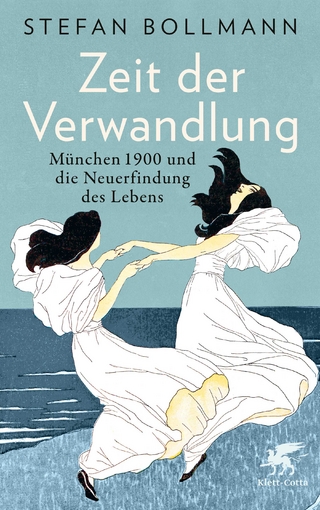
Humanism, Universities, and Jesuit Education in Late Renaissance Italy
Brill (Verlag)
978-90-04-51027-2 (ISBN)
This book contains twenty essays on Italian Renaissance humanism, universities, and Jesuit education by one of its most distinguished living historians, Paul. F. Grendler. The first section of the book opens with defining Renaissance humanism, followed by explorations of biblical humanism and humanistic education in Venice. It concludes with essays on two pioneering historians of humanism, Georg Voigt and Paul Oskar Kristeller. The middle section discusses Italian universities, the sports played by university students, a famous law professor, and the controversy over the immortality of the soul. The last section analyzes Jesuit education: the culture of the Jesuit teacher, the philosophy curriculum, attitudes toward Erasmus and Juan Luis Vives, and the education of a cardinal.
This volume collects Paul Grendler's most recent research (published and unpublished), offering to the reader a broad fresco on a complex and crucial age in the history of education.
Paul F. Grendler, Professor Emeritus of History, University of Toronto, is the author of twelve books and editor-in-chief of the Encyclopedia of the Renaissance. He has received the Galileo Prize, the Paul Oskar Kristeller Lifetime Achievement Award, and the George E. Ganss S.J. Award.
Acknowledgments
List of Illustrations
Abbreviations
Introduction
part 1
Humanism
1 Humanism: Ancient Learning, Criticism, Schools, and Universities
1 The Historiography of Humanism
2 Classical Learning and Criticism
3 Schools and Universities
2 Georg Voigt: Historian of Humanism
1 Education and Career
2 Die Wiederbelebung
3 Influence
4 Conclusion
3 Italian Biblical Humanism and the Papacy 1515–1535
1 Four Christian Hebraists
2 Two Curial Cardinals
3 The Role of the Papacy
4 Conclusion
4 Education in the Republic of Venice
1 Medieval Background
2 The Renaissance Expansion of Schooling
3 Catholic Reformation Schooling
4 The Reforms of the 1770s
5 Jewish Schooling
6 Conclusion
5 The Humanistic Gymnasium from Humboldt to Kristeller
1 Bildung and the Humanistic Gymnasium
2 Paul Oskar Kristeller at the Mommsen Gymnasium
3 Conclusion
part 2
Universities
6 Paul Oskar Kristeller on Renaissance Universities
1 Early Interest in Universities
2 Publications 1945 through 1956
3 A Book on the “Intellectual History of the Italian Universities to 1600”
4 “The Curriculum of the Italian Universities”
5 Debates with Other Scholars
6 Theology in Italian Universities
7 The University of Heidelberg
8 Other Studies
9 Conclusion
7 Studies on the Italian Universities of the Renaissance An Unpublished Work of Paul Oskar Kristeller. Introduced and Edited by Paul F. Grendler
8 Italian Universities and War 1494–1630
1 The University of Pavia and War
2 The Movements of Professors and Students Because of War
3 Conclusion
9 Gasparo Contarini and the University of Padua
10 Fencing, Playing Ball, and Dancing in Italian Renaissance Universities
1 The Students
2 Lo scolare of Annibale Roero
3 Fencing
4 Playing Ball
5 Dancing
6 Conclusion
11 On the Causes of the Greatness and Magnificence of Italian Universities
1 Conclusion
12 Giacomo Antonio Marta: Antipapal Lawyer and English Spy 1609–1618
1 Civil and Ecclesiastical Jurisdiction
2 A Spy for James I
3 The Supplicatio ad Imperatorem … Contra Paulum Quintum
4 Conclusion
13 Apostolici Regiminis Sollicitudo: Italian Preachers Defend the Immortality of the Soul
1 Apostolici Regiminis Sollicitudo
2 The Italian University Response
3 Preachers Against False Philosophy: Cornelio Musso
4 Franceschino Visdomini and Girolamo Seripando
5 Francesco Panigarola
6 Conclusion
part 3
Jesuit Education
14 Laínez and the Schools in Europe
1 Before 1556
2 Growth of the Schools
3 The Teacher Shortage
4 The Schools Are the Most Important Ministry
5 The Formula for Accepting Colleges
6 Other Actions
7 Conclusion
15 Philosophy in Jesuit Schools and Universities
1 The Development of the Philosophical Cursus
2 Teachers and Schools
3 Conflicts with Universities
16 The Culture of the Jesuit Teacher 1548–1773
1 All Jesuits Will Teach
2 Leader and Manager of the Classroom
3 The Culture of Competition
4 Jesuit Civic Humanism
5 Teacher of the Elite
6 The Jesuit Teacher Cares for Poor and Weak Students
7 Conclusion
17 The Attitudes of the Jesuits toward Juan Luis Vives
1 Ignatius of Loyola and Vives
2 After Ignatius
3 Conclusion
18 The Attitudes of the Jesuits toward Erasmus
1 Should Jesuit Schools Teach the Works of Erasmus?
2 The Generalate of Diego Laínez 1556–1565
3 After the Indexes
4 The Final Destination of the Works of Erasmus
5 Conclusion
19 Fifteenth-Century Catechesis, the Schools of Christian Doctrine, and the Jesuits
1 Youth Confraternities Teaching Christian Doctrine in the Fifteenth Century
2 Fifteenth-Century Catechisms
3 The Milanese Schools of Christian Doctrine
4 The Missing Jesuits
5 Jesuit Catechesis
6 Conclusion
20 The Jesuit Education of Benedetto Pamphilj at the Collegio Romano
Index 495
| Erscheinungsdatum | 06.05.2022 |
|---|---|
| Reihe/Serie | History of Early Modern Educational Thought ; 4 |
| Verlagsort | Leiden |
| Sprache | englisch |
| Maße | 155 x 235 mm |
| Gewicht | 1009 g |
| Themenwelt | Geisteswissenschaften ► Archäologie |
| Geschichte ► Allgemeine Geschichte ► Neuzeit (bis 1918) | |
| Geisteswissenschaften ► Philosophie ► Philosophie des Mittelalters | |
| Religion / Theologie ► Christentum ► Kirchengeschichte | |
| Sozialwissenschaften ► Pädagogik ► Allgemeines / Lexika | |
| ISBN-10 | 90-04-51027-3 / 9004510273 |
| ISBN-13 | 978-90-04-51027-2 / 9789004510272 |
| Zustand | Neuware |
| Informationen gemäß Produktsicherheitsverordnung (GPSR) | |
| Haben Sie eine Frage zum Produkt? |
aus dem Bereich


